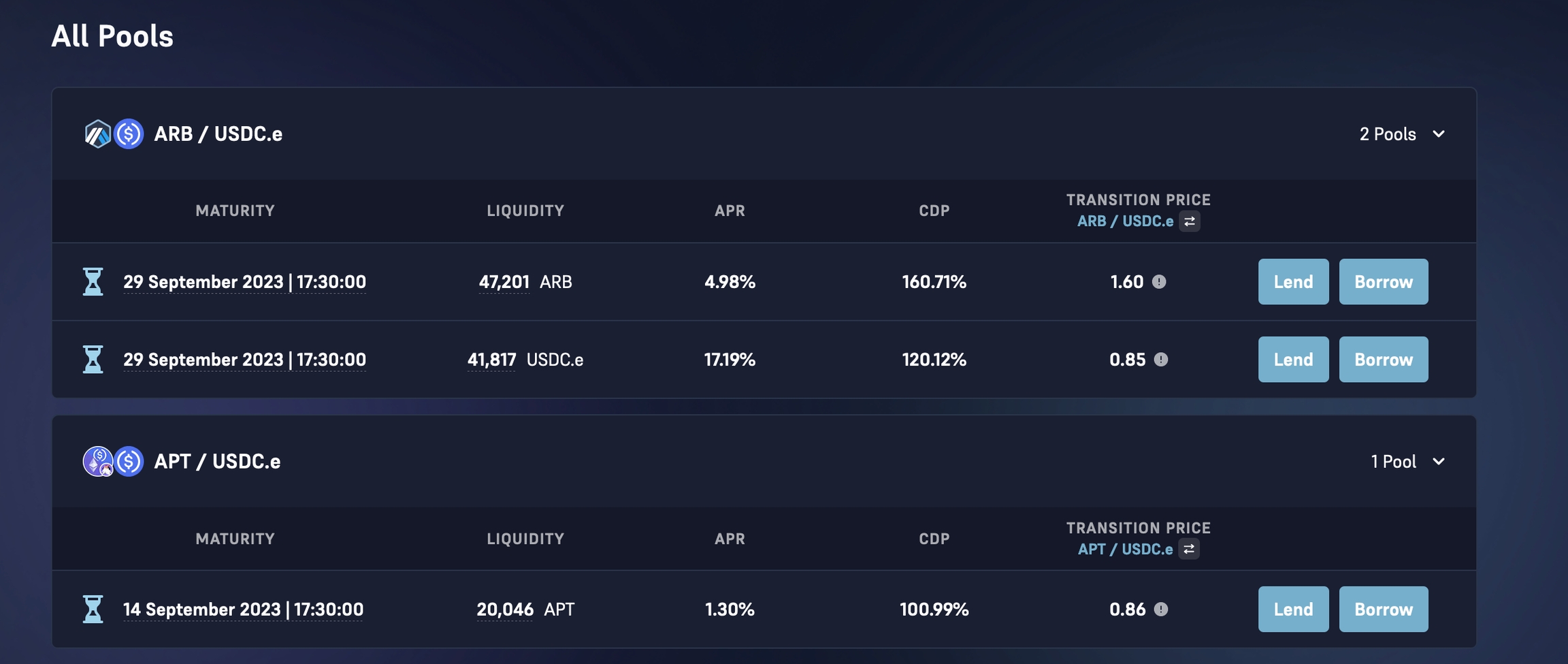Pool Creation
A pool on Timeswap is first initiated by a Liquidity Provider who sets the initial parameters for the pool. The Pool creator also adds the initial liquidity to bootstrap the market. A liquidity pool can be created for any pair of tokens.
Timeswap can have pools for multiple token pairs, each of which can have different pools with different strike price & maturity dates.
Here's how pools are uniquely identified:
Token Pair: Defined as Token A/TokenB. (For example: ARB/USDC in the above image.)
Maturity Date: The date and time at which the pool expires. (For example: 29th September | 17:30:00)
Transition price: The price level at which borrowers are expected to change their actions (whether to repay or to default on their loans). (For example: 1.60 ARB/USDC)
Now that we understand the Liquidity provider well, it won't be difficult to grasp the pool creator.
Step 1: The Parameters.
Suppose a Liquidity Provider wants to create USDC/ETH pool with the following parameters:
Interest rate (I): 10% APR
Transition Price (TP): 1000 USDC per ETH
Duration (d): 1 Year
Here are some ratios and parameters we would need to create the pool:
Where I is the annual marginal interest rate = 10% annually = 10/100 annually = 1/10
Interest rate per second = (10/100)/d per second (where d is the duration of the pool)
Therefore, Where dz is the Interest Amount and (x+y) is the amount of tokens available for borrowing. (seconds in 1 year which is the pool maturity in our example)
NOTE: Liquidity Providers can add any amount of tokens by maintaining Marginal Interest 'I' or ratio.
Depending on the state of the pool, LPs add either ETH (when K>S) or USDC (when S>K). Let's look at both cases.
Step 2: Create Pool.
Last updated
